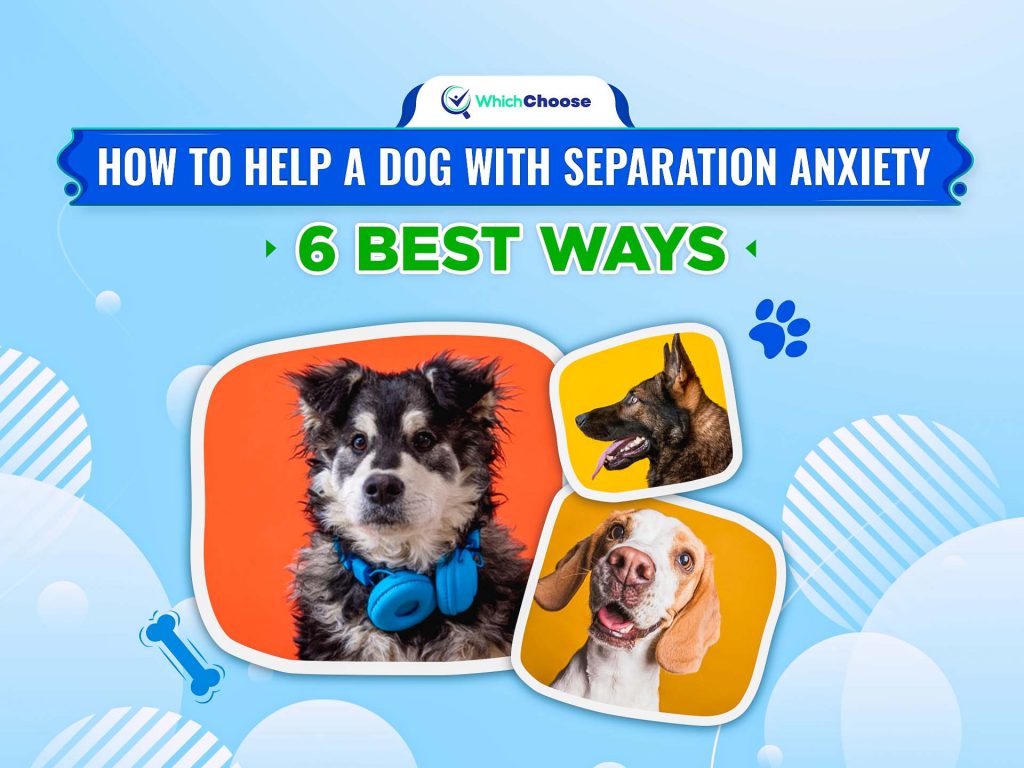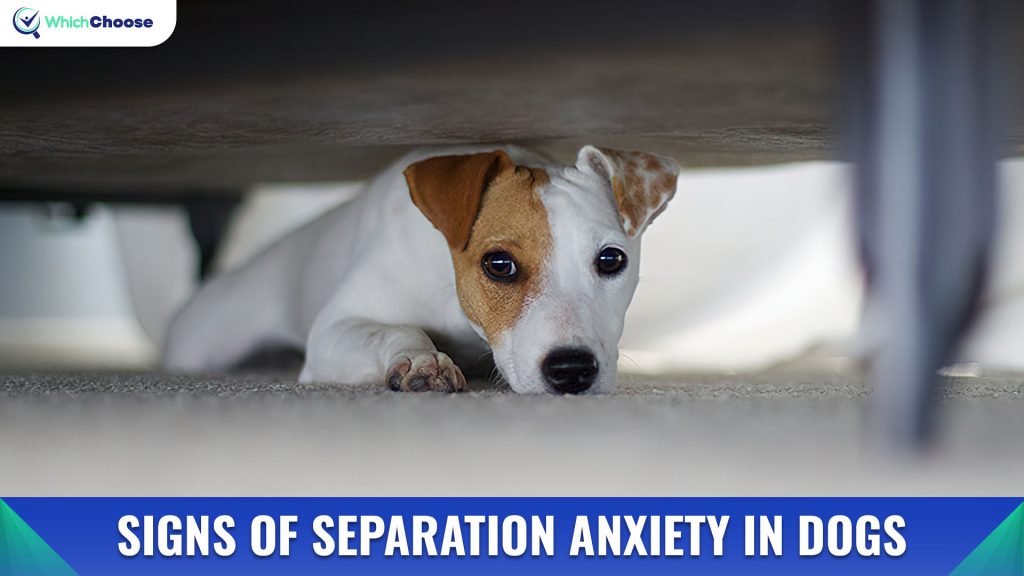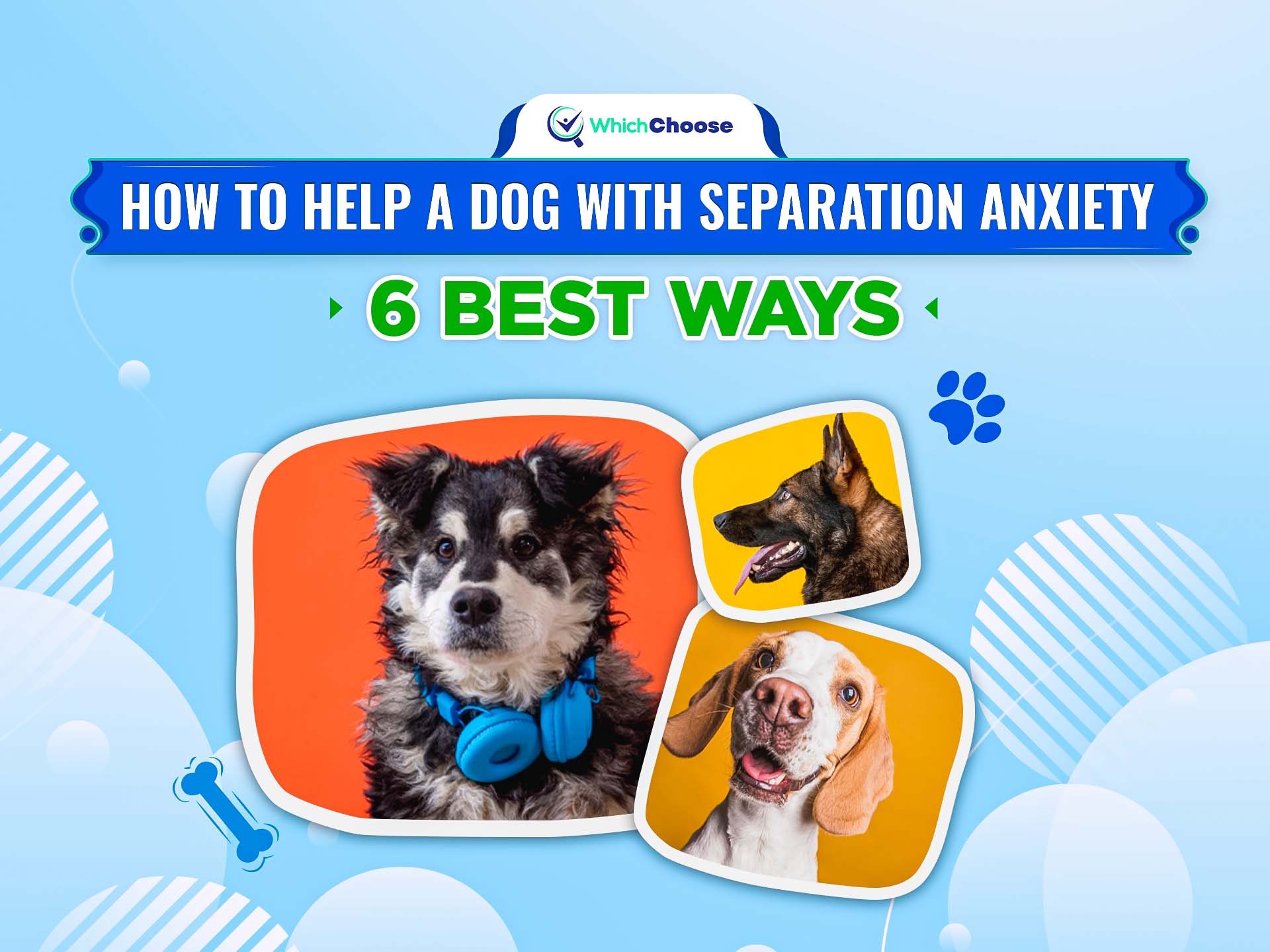Table of Contents
Separation anxiety is a serious problem for a lot of dogs. It can be a stressful and upsetting experience for the dog and its owner when they return home to find the dog has destroyed something important. In this post, WhichChoose will share 6 ways on how to help a dog with separation anxiety.

About Dog Separation Anxiety
Before knowing how to calm dog separation anxiety, you need to understand dog separation anxiety. Separation anxiety is a stress response your dog shows when the person it is bonded with is not at home.
Tina Flores, a certified separation anxiety trainer, says, “When a dog suffers from separation anxiety, it is pretty familiar with a panic attack in a human. A human, for instance, with a scare of heights who is placed on top of a tall construction may show sweaty palms, a fast heart rate, and a dry mouth. In the same way, if dogs who feel separated and anxious are left alone, their bodies have stress hormones.
The reactions of dogs can range from mild distress, such as whining and pacing, to extreme anxiety, leading dogs to injure themselves when trying to escape confinement. There’s no single reason why some dogs develop this stress response to being left alone; for most dogs, it is linked to an environmental change or traumatic event in that they feel upset. Instances include:
- Changes in their routine (pet owner change from a part-time to a full-time position).
- Changes in the family (divorce or death of a family member).
- Lifestyle changes (rehousing from the country to the city).
Signs of Separation Anxiety in Dogs

Dogs experiencing separation anxiety may learn their person’s pre-departure signs, such as making lunch, wearing a specific uniform, or arranging a briefcase, and begin to show stress before their owners leave home. When the dog is alone, it may show any or all of the hallmarks of separation anxiety, as follows:
- Destruction: Many dogs experience separation anxiety and destroy small household items, such as the pillows and remote control, or resort to large-scale destruction, such as tearing through walls, doors, windows, or furniture.
- Loss of appetite: Separation anxiety can lead the most food-motivated dog to ignore bones and treats.
- Escape: Dogs with serious separation anxiety may escape confinement, which can cause injuries.
- Pacing: Dogs panicked by their people leaving cannot settle down and resort to repeatedly walking back and forth.
- Drooling: Some anxious dogs drool excessively and wind up with a soaked chest and chin.
- Elimination: Dogs that are home-trained may have accidents when alone, consisting of diarrhea.
- Vocalization: Howling and barking are general canine responses to isolation; however, dogs with separation anxiety may continue vocalizing the whole time they are alone.
How To Help A Dog With Separation Anxiety
Here are 6 effective ways to help dog with separation anxiety:
3.1. Consult With Your Veterinarian
These symptoms can show various problems, so just because your dog behaves a specific way does not mean it is exactly separation anxiety. Therefore, your dog needs an official diagnosis for your vet to eliminate other medical problems or behavior.
3.2. Medication and Natural Supplements

Sometimes counter-conditioning and training are not enough. Some medications, like amitriptyline, are recommended to treat alprazolam or depression and prescribed for panic disorders and anxiety. These ask for a prescription and are safe for most pets, although you must speak with your vet. Moreover, you need to be patient when using medication with a young dog.
The best way on how to ease dog separation anxiety is natural supplements. Among many options, Reggie Anytime Calming is one of the most effective and rated calming chews. With quality and natural ingredients, this product helps decrease anxiety and stress and calm hyperactivity for your dogs.
Reggie Dog Supplements
3.3. Crate training
Crate training is one of the most effective solutions for any dog; it greatly assists dogs with separation anxiety. When making your dog’s crate, ensure it is a relaxing and comfortable environment. You do not force your dog into the crate, particularly not as a form of punishment. Your pet should view its crate as an attractive and safe refuge.
To reinforce this feeling, you can begin crate training by supplying your dog with a long-lasting treat, such as a peanut butter chew toy; however, only when they are in their crate. You can feed your pet meals in their crate as positive reinforcement. Time goes by, and your dog will begin to link their crate to sleeping, rest, positive nurturing care, and eating; thus, you can crate your dog to calm any stress they feel when you are not home.
3.4. Exercise
Exercise can not cure separation anxiety but can aid in treating and preventing it. Firstly, ensure your dogs get many age-appropriate physical activities. This is particularly true for high-energy and large dogs with lots of it to burn off. A contented, tired dog, who has a brisk walk and playtime with you, tends to settle down when you are away.
Secondly, you need to care about your dog’s mental muscles. Training sessions, cognitive games, and puzzle toys are good choices. A brain workout can be as exhausting as physical exercise and much fun.
3.5. Change Your Dog’s Diet

Changing your dog’s diet is one of the best answers to the question, “How to calm separation anxiety in a dog?”. There is a strong association between behavior and diet; therefore, noticing your dog’s diet can help. Many issues can happen when dogs eat a poor-quality meal, such as kibble. Therefore, switching to a natural species-appropriate diet without artificial ingredients can be a good solution.
Do you want to avoid your dog’s mood swings that can lead to low blood sugar? You can try to feed the largest meal of the day before you leave home because your dog will feel more sleepy and comfortable after a satisfying meal.
3.6. Use An Interactive Camera
If you’re concerned about your dog’s behavior when you are not at home, a pet cam is a good option, and it may help calm your dog’s separation anxiety. It would help if you bought a model with two-way features that allow your puppy to see and hear you. For some dogs, this option will be helpful; however, for others, hearing you but not knowing where you are can make their anxiety get worsen.
WhichChoose hopes you enjoyed our article about how to help a dog with separation anxiety. You can put some of these tips above when temporarily away from your dog! If you have any other questions about dog separation anxiety, just leave a comment below. We’ll try our best to give you the answer you are looking for!
WhichChoose is the website products and services review that helps users in the world to find what the best is and shop easily.







